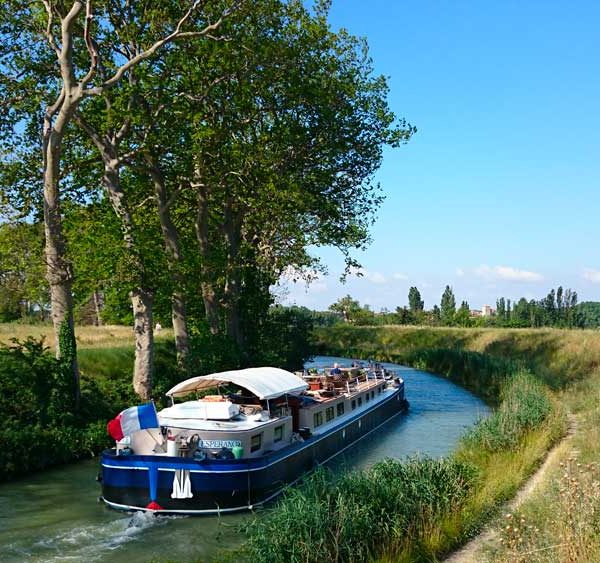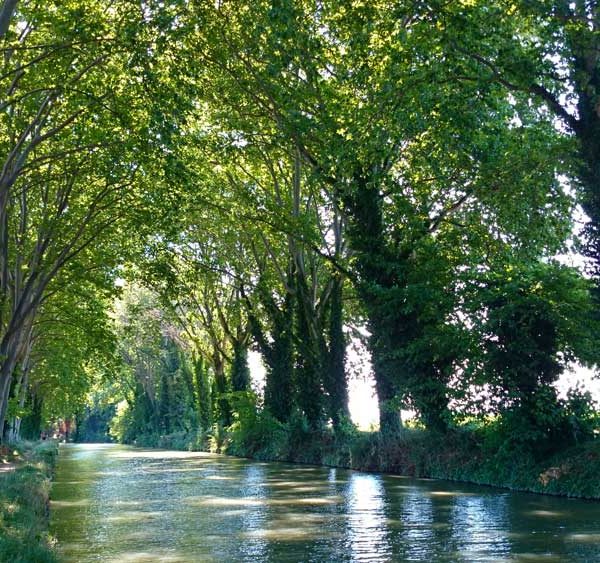The Canal du Midi: Over the canal and through the vineyards
Europe’s most popular waterway, the Canal du Midi is a UNESCO World Heritage Site and epitomises French lifestyle as it wends its way beneath the shade of the plane trees amidst Languedoc’s vineyards. More than 350 years after it was built, the multi-purpose canal stands as a celebration of the genius of its inventor, Pierre-Paul Riquet.
328 structures dotted along the waterway:
Completed in 1681 after taking 14 years to build, the Canal boasts 99 locks from Toulouse to Agde; 7 canal bridges allowing it to span rivers; and 126 bridges, aqueducts, spillways and weirs. Pierre-Paul Riquet’s dream of a canal linking the Atlantic to the Mediterranean to facilitate the transport of goods, undeniably deserved its listing as a UNESCO World Heritage Site in 1996.
Born in Béziers in 1609, this collector-general of the ‘gabelle’ tax in Languedoc, Roussillon and Cerdanya, convinced Colbert, Louis XIV’s Minister of Finance, to harness the waters gushing off the Montagne Noire and direct them towards the Naurouze watershed between the Atlantic and the Mediterranean, the highest point of the canal. After pulling off this feat of engineering, its inventor went on to move other mountains to bring the waterway and its remarkable structures to life. Impressive structures include the Répudre canal bridge at Paraza, the Redorte spillway, the port of Le Somail, Malpas tunnel, the round lock in Agde and the Fonseranes nine-lock staircase in Béziers, which takes barges over a drop of 25 metres using a 315-metre long lock system.
328 structures dotted along the waterway:
Completed in 1681 after taking 14 years to build, the Canal boasts 99 locks from Toulouse to Agde; 7 canal bridges allowing it to span rivers; and 126 bridges, aqueducts, spillways and weirs. Pierre-Paul Riquet’s dream of a canal linking the Atlantic to the Mediterranean to facilitate the transport of goods, undeniably deserved its listing as a UNESCO World Heritage Site in 1996.
Born in Béziers in 1609, this collector-general of the ‘gabelle’ tax in Languedoc, Roussillon and Cerdanya, convinced Colbert, Louis XIV’s Minister of Finance, to harness the waters gushing off the Montagne Noire and direct them towards the Naurouze watershed between the Atlantic and the Mediterranean, the highest point of the canal. After pulling off this feat of engineering, its inventor went on to move other mountains to bring the waterway and its remarkable structures to life. Impressive structures include the Répudre canal bridge at Paraza, the Redorte spillway, the port of Le Somail, Malpas tunnel, the round lock in Agde and the Fonseranes nine-lock staircase in Béziers, which takes barges over a drop of 25 metres using a 315-metre long lock system.
Building work on the Canal du Midi lasted from 1666 to 1681
It took four days to travel from Sète to Toulouse and less than ten to reach the Atlantic, thanks to the building of other canals, such as the Canal Latéral à la Garonne, as far as the ocean and Bordeaux.
As soon as it was opened, the Canal du Midi promoted growth of the kingdom’s economy, allowing raw materials such as wheat, wine, silk and salt to be transported by water. From the 19th century onwards, however, the Canal du Midi bore the brunt of competition from the railways. Freight transport was stopped in 1989, to be superseded by pleasure boats, but the waterway still wends its way amidst the vineyards of Languedoc, crossing the Languedoc, Saint-Chinian, Minervois, Cabardès and Malepère appellation areas. Pontoons provide access to the wineries and vineyards located along its route.




